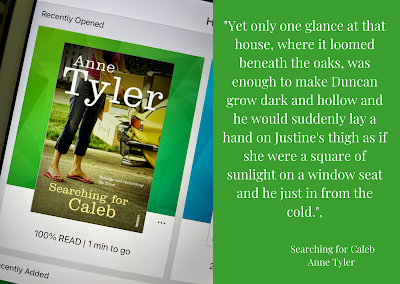 |
Schiffercompagnie founded in 1488
to work in mutual benefit of
merchants and seafarers |
As I wrote in an earlier post I have been visiting two of the cities in the Hanseatic League, Stralsund and Wismar. Beautiful cities both of them but I have a small preference for Stralsund where you were really transferred to the Medieval times and all the way up to the 19th century. It has been a little bit of a problem coming back to the 21st century! The houses are absolutely beautiful and during recent times a lot of renovation has been taking place. So what is the historical significance of these cities?
 |
| Door carving beauty! |
These are two of the cities of the Hanseatic League or the Hansa. At the peak of their power they had as many as between 80 and 100 member cities. The League was a commercial and defensive confederation of merchant guilds and although not on governmental level one can maybe call it a forerunner to the European Union with member cities rather than member states. It
included cities from the Baltic to the North Sea and inland during the Late Middle Ages and early modern period, i.e. 13th to 17th centuries. This was turbulent times and the reason for creating the League was to help each other protect economic and legal interests and diplomatic privileges in the areas where the merchants did their trade. The cities had their own legal and defence systems and helped and protected each other when necessary. However, they were not city-states since only a small number of the cities had some kind of autonomy.
 |
| House Musleum |
So in what goods did they trade? They exported from east to Flanders and England timber, wax, amber, resins, tar, furs, honey rye and wheat. Returning they brought with them cloth and manufactured goods. From Sweden they brought metal ore (copper and iron) and herring. For communication they used a Middle Low German dialect which would be understood in the countries involved in the trade and contained dialects from Scandinavia, Estonia and Latvia. There is much more to tell but it would be too long to put it all here. I find however, that the story of the Hansa is a very interesting one.
In the House Museum you can see how people lived in the 15th and 16th century. It is totally renovated with material and techniques as far as possible as it was in those days. It is a beautiful house and typical of the city and times. You have an entrance from the street where normally the business was handled from. There is a cellar for storing goods. One stair up you had the offices of living quarters (as in this house, sometimes the living quarters was in an annex rather than in the main building), the following four floors (yes, that is why they have this form of the houses) they used for storage. In the middle of the house is a 'lift' where they took the goods from the ground floor to the upper floors (a little bit like an old time well; with a rope that rolls on to a wooden bar and then is hauled up).
 |
The Swedish
Kommandante house |
The other part of Stralsund and Wismar (from my point of view) is that they belonged to Sweden once
 |
| Wolflamsstuben restaurant |
upon a time. Not by mutual agreement unfortunately but because of occupation and gains of land after the Thirty Year War in Europe. Occupied by the Swedes already in the 1630s they passed into Swedish possession by the Westphalian Peace Treaty in 1648. Although, especially in Stralsund, there are a lot of Swedish history (there is even a Swedish route you can take to see buildings they build or used), I would say that the atmosphere of the town is still Medieval and Hanseatic. Wonderful houses in so many different colours, easy to walk around the whole town, small restaurants and bars, museums and a huge Sea and Oceanic museum in two buildings. Outside of the harbour, these days connected by a bridge, you have the island of Rügen and Hidensee which are very popular resorts in the summer. Book early if you want a hotel during that time.
 |
| Pub 'Zur F'ähre' |
Here you also find what they call the oldest pub in Europe, Zur Fähre. It was first mentioned in 1332 as 'Taberna opud passagium'. I of course had to go there for a glass of wine!
Wismar has similar beautiful houses and small, cobbled streets in the Old Town. Their history is more or less the same as their neighbouring city, however, where the Old Town in Stralsund is mostly left to the historical places with just a few shops, restaurants and bars, the Old Town of Wismar if full of life with many more shops. In that way it is more alive and there were a lot of people around.
 |
Der Alte Schwede,
excellent restaurant |
 |
| Water Fountain from 1602 |
On the square which is one of the biggest squares in northern Germany you are surrounded by the Rathaus (Town Hall, original destroyed in a fire so the present one is from the 19th century, has a nice exhibition in the cellar on the history of Wismar) and other magnificent houses which today are hosts to hotels, restaurants and cafés. One restaurant to recommend is the Alte Schwede (the Old Swede) which is situated in a wonderful old house. On one side of the square is the magnificent water work from 1602 which used to provide clean water for the city.
 |
St Nikolaj church is hovering
above the Furstenhof |
From 1653 Sweden established new legislation and placed its highest court in the Furstenhof in Wismar. A little bit of an anecdotally story. In 1803 the Swedish government needed money and 'pawned' the town and lordship to Mecklenburg for 1.258.000 Riksdaler (a lot of money in those days) reserving the right of redemption after 100 years. After 100 years the whole of Europe was quite different as was the situation in Sweden so they never did claim it back.
 |
Furstenhof ,a former princely palace,
home to the legislative court during
the Swedish time |
In film we can see Wismar as the setting for the 1922 vampire movie Nosferatu (called Wisborg) and also in Werner Herzog's 1979 remake Nosferatu, the Phantom of the Night.













Comments
Post a Comment